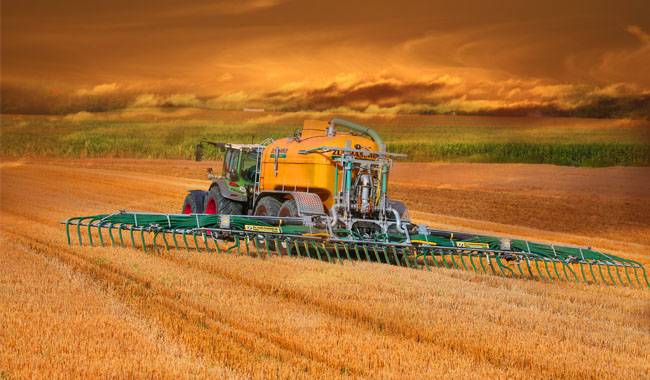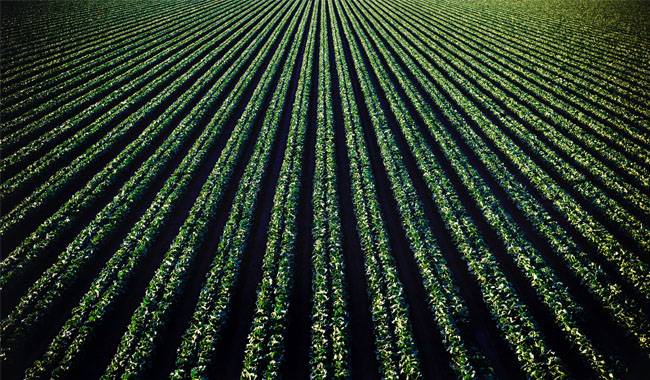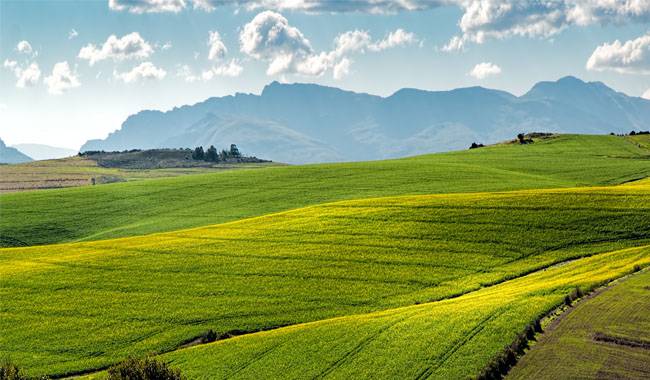
Almost every vegetable grower is familiar with the term “crop rotation.” However, in practice, crop rotation is difficult and often overlooked, especially in small vegetable gardens. But if you dare to think about it, this principle of vegetable gardening is not so untouchable. Just take a pencil, prepare a piece of paper and make a planting plan for your version of a seedbed. What’s more, there are 5 ways to set up a small crop rotation, And even the simplest of them can lead to a significant increase in yields while greatly reducing the problems that arise from growing a single crop.
MAKING A CROP LIST
The first thing you need to do when setting up a crop rotation is to list the vegetables you want to grow in your garden. Potatoes, tomatoes, cucumbers, carrots, onions, garlic, parsnips. If something is not an annual crop – don’t include it in the list to not complicate your task.
CALCULATE THE NUMBER OF BEDS FOR THE CROP
The second step is to determine the number of beds allocated to the crop rotation. It is most practical to alternate between four and five plots. However, crop rotations of three, six, seven, or even twelve fields also exist.
If you do not have a set number of seedbeds, which variant is right for you will become clear in the article.

ESTABLISHING CROP ROTATIONS
The basic principle of crop rotation is to change the crop grown in a given location every year.
This ensures, first of all, that there is no soil saturation in a given area (because the same crop grown in the same area each year removes mainly the same nutrients from the soil, from the same depth). Secondly, it prevents the accumulation and spread of pests and diseases that affect not only one crop, but also different vegetables from the same family. Thirdly, it allows the correct use of fertilizers, since different crops have different fertility requirements.
So, even if you grow a different family of vegetables each year than the previous season, this is already the most basic way to stick to crop rotation!
We could stop there, but it is interesting to consider a more in-depth treatment of this issue.
Crop rotation method 1, rotating crops
One of the simplest crop rotation solutions is based on dividing all vegetable crops into four basic groups.
Division of crop into groups
| Leafy | Different types of cabbage, lettuce, green onions, spinach |
| Fruit | Tomatoes, cucumbers, peppers, zucchini, eggplant, pumpkin |
| Roots | Radishes, beets, carrots, potatoes |
| Legumes | Peas, chickpeas, beans |
In this case, the order of rotation is as follows.
First-year: Bed 1 is fruits, Bed 2 is root crops, Bed 3 is legumes, Bed 4 is leaf crops.
Second-year: fruits to bed 4, root crops to bed 1, legumes to bed 2, and leafy crops to bed 3. Facts. First root crop, second legume crop, third leafy crop, fourth fruit crop.
Third-year: Root crops go to bed 4, and all other groups move one more step forward. And so it goes, with each new season.
Crop rotation method 2, rotating crops on demanding soils
The next simple method is to rotate crops according to the suitability of the soil. There are four main vegetable groups.
Division of crops according to the level of requirements for soil fertility
| Demanding fertility | aster, cabbage, pumpkin |
| Medium demanding | nightshade |
| Undemanding | amaranth, Amaryllidaceae, umbrella |
| Enriching the soil | legumes |
However, you also need to understand the botanical families of crops.
The ratio of vegetable crops to botanical families
| Family name | Vegetable crops |
| Nightshade | Potatoes, tomatoes, eggplants, vegetable peppers |
| Umbrella or celery | Carrots, dill, parsley |
| Amaranth | Beets, spinach |
| Pumpkin | Cucumbers, zucchini, squash, pumpkin, watermelon, melon |
| Cabbage or cruciferous | Cabbage, radish, criss-salad |
| Amaryllidaceae | Onion garlic |
| Cereals | Corn |
| Astrovye | Sunflower, salad |
| Legumes | Peas, beans |
The rotation of this principle is as follows.
Fertility-demanding vegetables → Moderate-demanding → Non-demanding → Beans.
Crop rotation method 3, crop rotation by family
This method is based on the alternation of crops from different families. The sequence is as follows.
Solanaceous plants (except potatoes) → legumes → cabbage → umbelliferous
Or.
Melon → bean → cabbage → umbrella
Or.
Solanaceae → legumes → cabbage → umbrella or: squash → beans → cabbage → umbrella or: Solanaceae → cabbage → umbrella
In this case, garlic and onions can be planted in winter after night vegetables.
Crop rotation method 4, crop rotation according to soil impact
Since each crop leaves behind not only disease-causing organisms, certain indicators of the presence of weeds, but also deficiencies of one or another element, it is possible to rotate crops according to their impact on the soil.
The influence of vegetable crops on the soil
| Plants that severely drain the soil | All types of cabbage, beets, carrots |
| Medium soil depletion plants | tomatoes, peppers, zucchini, eggplant, onions |
| Plants that are weakly depleting the soil | cucumber, peas, salads, spinach, radish |
| Plants that enrich the soil | all legumes |
In this case, the rotation principle is as follows.
Plants that are strongly depleted → plants that are moderately depleted → plants that are weakly depleting → plants that enrich

Crop rotation method 5, rotating with the previous best crop
Finally, the most time-consuming, but at the same time the most comprehensive, method of crop rotation planning.
It involves selecting crops for rotation with the best previous crop and includes a comprehensive combination of factors that help maintain fertility and eliminate weed and disease infestation from the plot. It is relatively easy to set it up using the table below.
Major crops and their predecessors
| THE BEST | ADMISSIBLE | UNACCEPTABLE |
| Eggplant | ||
| melons, legumes, greens, zucchini, early varieties of white cabbage, cauliflower, onions, carrots, cucumbers, squash, green manure, pumpkin, garlic | cabbage of medium and late varieties, corn, gingerbread, beets | eggplants, early potatoes, peppers |
| Notes: Eggplant is an Unacceptable predecessor for nightshades and melons. For all other crops, it is acceptable. | ||
| Legumes (peas, chickpeas, beans) | ||
| garden strawberries, early potatoes, cabbage (all types), zucchini, onions, cucumbers, squash, pumpkin, garlic | eggplants, greens, carrots, peppers, gingerbread, green manures, beets, tomatoes | legumes, corn |
| Notes: Legumes for vegetable crops are not only The best predecessor but also excellent green manure. They can be returned to their original place after 2-3 years, but these crops are not afraid of growing in one place. | ||
| Greens (onions, spinach, lettuce) and gingerbread (basil, coriander) | ||
| legumes, cucumbers, zucchini, early white cabbage, cauliflower, onions, squash, green manure, pumpkin, garlic | eggplant, greens, early potatoes, corn, pepper, gingerbread, tomatoes, beets | white cabbage medium and late ripening, carrots |
| Notes: These two groups of plants are a good and valid precursor for all vegetable crops except onions. They can be returned to their original place after 3-4 years. | ||
| Zucchini | ||
| legumes, potatoes, early white cabbage, parsley, cauliflower, corn, onion, garlic | legumes, greens, early potatoes, gingerbread, beets | eggplants, white cabbage of medium and late varieties, carrots, peppers, tomatoes, pumpkin |
| Notes: Zucchini, as a predecessor, tends to leave a minimum of weeds. After it, you can plant any vegetable crops. Zucchini can be returned to its original place after 2-3 years. | ||
| Cabbage | ||
| legumes, zucchini, early potatoes (for medium and late varieties), onions, carrots (for medium and late varieties), cucumbers, tomatoes, green manure, beans | peas, greens, eggplant, pepper, lettuce, tomatoes | cabbage, cucumbers, radishes, beets, pumpkin |
| Notes: Cauliflower and early varieties of white cabbage are an excellent precursor for all vegetable crops, but mid-season and late varieties are Unacceptable as a precursor for herbs and gingerbread. It can be returned to its original place after 3-4 years. | ||
| Potato | ||
| legumes, early white cabbage, cauliflower, zucchini, onions, cucumbers, squash, green manure, pumpkin, garlic | greens, cabbage of medium and late varieties, corn, carrots, gingerbread, beets | tomatoes, peppers, eggplants; |
| Notes: With increased care, potatoes can be grown as a monoculture. After potatoes, it is good to plant cabbage of medium and late varieties, carrots, beets, onions, legumes, Unacceptable – cauliflower and early cabbage, nightshade. In a crop rotation, it can be returned to its original place after 2-3 years. | ||
| Corn | ||
| legumes, potatoes, beets | all cultures | millet |
| Notes: Corn can be grown in one place as a monoculture for up to 10 years, with the introduction of manure digging. After it, you can plant any crops. | ||
| Onion | ||
| legumes, zucchini, early potatoes, early white cabbage, cauliflower, cucumbers, squash, pumpkin, green manure | eggplants, white cabbage of medium and late varieties, corn, onions, peppers, beets, tomatoes, garlic | greens, carrots, gingerbread |
| Notes: Any vegetables can be grown after onions except garlic. They can be returned to their original place after 3-4 years. However, leeks are not afraid to grow in one place for several seasons. | ||
| Carrot | ||
| greens, cabbage, onions, zucchini, early potatoes, cucumbers, squash, gingerbread, pumpkin | eggplants, legumes, cabbage, corn, onions, peppers, radishes, beets, tomatoes, garlic | beet |
| Notes: Carrots are a good precursor for cabbage, tomatoes, peppers, eggplants, Unacceptable for melons, onions, herbs, gingerbread. | ||
| Cucumbers | ||
| legumes, potatoes, early white cabbage, parsley, cauliflower, corn, onion, garlic | legumes, greens, early potatoes, gingerbread, beets | eggplants, white cabbage of medium and late varieties, carrots, peppers, tomatoes, pumpkin |
| Notes: Any vegetables can be planted after the cucumbers. They can be returned to their original place after 2-3 years. | ||
| Squash | ||
| basil, legumes, potatoes, early white cabbage, cauliflower, corn, onion, garlic | legumes, greens, early potatoes, gingerbread, beets | eggplants, white cabbage of medium and late varieties, carrots, peppers, tomatoes, pumpkin |
| Notes: Patisson is a good predecessor for all vegetable crops. It can be returned to its original place after 2-3 years. | ||
| Pepper | ||
| melons, legumes, greens, zucchini, early varieties of white cabbage, cauliflower, onions, carrots, cucumbers, squash, green manure, pumpkin, garlic | cabbage of medium and late varieties, corn, gingerbread, radish, beets | eggplants, early potatoes, peppers, tomatoes, pumpkin |
| Notes: Pepper is a valid precursor for all crops except nightshade and melons. | ||
| Sunflower | ||
| legumes, corn | potato | peas, tomatoes, beets, beans |
| Notes: Sunflower is a very bad predecessor for any crop; it can be returned to its original place no earlier than 6-8 years later, after which it is possible to sow siderates – white mustard, peas, vetch. | ||
| Radish | ||
| legumes, potatoes, onions, cucumbers, tomatoes, garlic, strawberries | eggplant, greens, corn, pepper, gingerbread, tomatoes, beets | cabbage, carrots |
| Notes: Radish is a fast growing crop, so it can be grown between the rows of the main crops. After it, it is good to plant strawberries. | ||
| Beetroot | ||
| greens, zucchini, onions, cucumbers, squash, gingerbread, pumpkin, green manure | legumes, eggplant, early white cabbage, cauliflower, corn, onions, carrots, peppers, tomatoes, garlic | medium and late cabbage, potatoes, beets |
| Notes: Beets must be placed in the garden for 2-3 years after applying organic fertilizers. After it, it is good to plant legumes, it is Unacceptable – cabbage and root crops. Beets can be returned to their original place after 2-3 years. | ||
| Tomatoes | ||
| basil, peas, greens, early white cabbage, cauliflower, carrots, cucumbers, green manure | legumes, white cabbage of medium and late ripening periods, corn, onions, gingerbread, beets, garlic | eggplants, early potatoes, peppers, tomatoes |
| Notes: Tomatoes are allowed in cultivation without crop rotation, however, in this case, they require increased care. After culture, it is not recommended to plant nightshades and melons; for the rest, tomato is an acceptable predecessor. It can be returned to its original place after 2-3 years. | ||
| Pumpkin | ||
| legumes, potatoes, early white cabbage, cauliflower, corn, onion, parsley, garlic | legumes, greens, early potatoes, gingerbread, beets | eggplants, white cabbage of medium and late varieties, carrots, peppers, tomatoes, pumpkin |
| Notes: Pumpkin leaves a weed-free soil behind and can be a good precursor for all crops. It can be returned to its original place after 2-3 years. | ||
| Garlic | ||
| legumes, zucchini, early potatoes, early white cabbage, cauliflower, carrots, cucumbers, squash, pumpkin, green manure | eggplants, white cabbage of medium and late varieties, corn, onions, peppers, beets, tomatoes, garlic | greens, carrots, gingerbread, radish |
| Notes: Garlic not only disinfects the soil well, but also leaves it practically weed-free. After it, you can grow any crops, except for onions. Garlic can be returned to its original place after 3-4 years. | ||
| Garden strawberry | ||
| legumes, onions, radishes, carrots, garlic, dill | cabbage, corn | potatoes, cucumbers, tomatoes |
| Notes: After tomatoes, potatoes and cucumbers, strawberries can be grown no earlier than 3-4 years later. The culture itself is a valid precursor for legumes, garlic, onions, parsley. |
An example of this crop rotation is as follows.
cabbage + cucumber → tomatoes → carrots + onions → potatoes
When selecting crops according to the principle of combination, their maturity date should also be taken into account. So, for example, radishes will have time to grow while you can still sow gourds.
Of course, in a mixed crop, you must find a place for flowers because they not only decorate the seedbed but also repel pests. These flowers can be amaryllis, alstroemeria, marigold, and calla lilies.
Edible plants on the lawn
Finally, in order to keep the fertility of the soil at the right level, alternate planting and mandatory use of green manures should be provided for in their plans. They can be sown in free vegetable time, under winter, or become part of a crop rotation, occupying a separate bed. What will it be? Winter rye, vetch, leaf mustard, peas, lupins, and various combinations of them.
For example, zucchini → peppers → carrots → potatoes → beans.
More Related Information About Gardening Tips







